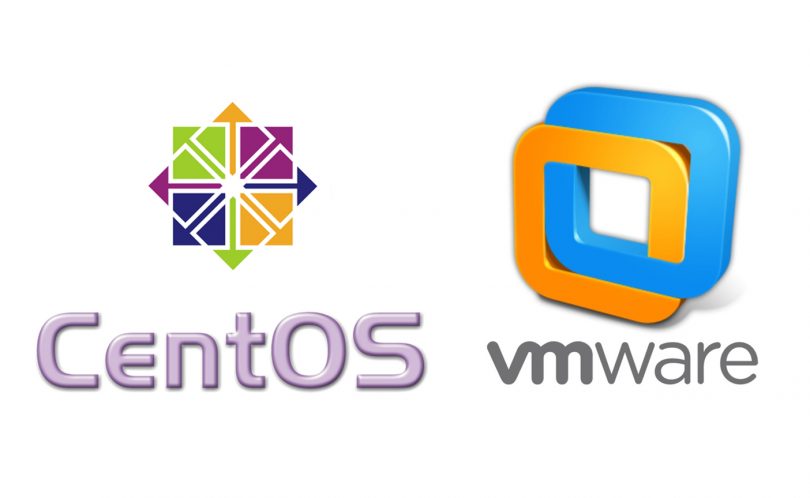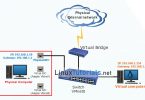CentOS (Community Enterprise Operating System) is a Linux Distro that is suitable for use on an Enterprise scale but also free. CentOS is made from the Red Hat Enterprise (RHEL) source code developed by a community called CentOS. But please note that even though it is based on RedHat Linux, it is not RedHat Linux. It is an OS with its own identity and one of the most widely used OS in the world today. If you wish to run any of your applications on cloud such as Amazon AWS or Microsoft Azure etc., CentOS will be one of the OS you can choose from.
Since these days most of the personal computers are powerful enough to run virtual machines, I recommend people to use a virtual machine to experiment with various other operating systems available in the market today. This avoids the need to clean install the new OS which is quite tedious and locks one down with one preference of the OS.
In this post, I want to show you how to install CentOS 7.6 on VMware workstation 15 Pro.
[wps_alert type=”note”]CentOS Official Website:
This is the link to the official CentOS website. You can download the installation media from here. There are official documentation here you can refer to.[/wps_alert]
CentOS Installation media download options:
On the official website home page, to get the installation media, you have to click Get CentOS Now. Here you will see 3 download options which are listed below:
- DVD ISO– Download size around 4 GB. This is the desktop version with GUI and contains the standard Linux packages which come pre-configured with any desktop version of the Linux OS such as C, python, ruby, PHP, etc. Install this if you wish to work on CentOS for software development in desktop mode or for learning purposes. For additional packages not availabe by default, you will have to install them yourself using the package manager.
- Everything ISO– Download size around 7 GB. This contains all of CentOS including what is available in DVD ISO. This also has a GUI. If you have bandwidth to download 7 GB, I would recommend this.
- Minimal ISO– Download size around 600 MB. This contains the core CentOS without GUI. That is, you will have to work on command line interface. If you wish to run a server, this is recommended as you can selectively install any package you want such as PHP, Apache, etc. This helps to keep the OS small and robust. The interface is the same as in any CentOS VPS servers available in the market. If you wish to learn how to work on cloud servers running CentOS, this is what you should use. Normally you access your cloud server using SSH client such as putty. Once you have the access, it is same as working on CentOS in CLI (Command Line Interface) mode.
In this Blog, I will show you how to install CentOS in all the three major Virtualization application- VMware Workstation 15
Step 1- Open VMWare Workstation
Open VMware Workstation from Windows Start menu or from you desktop if you have VMware Workstation icon there.
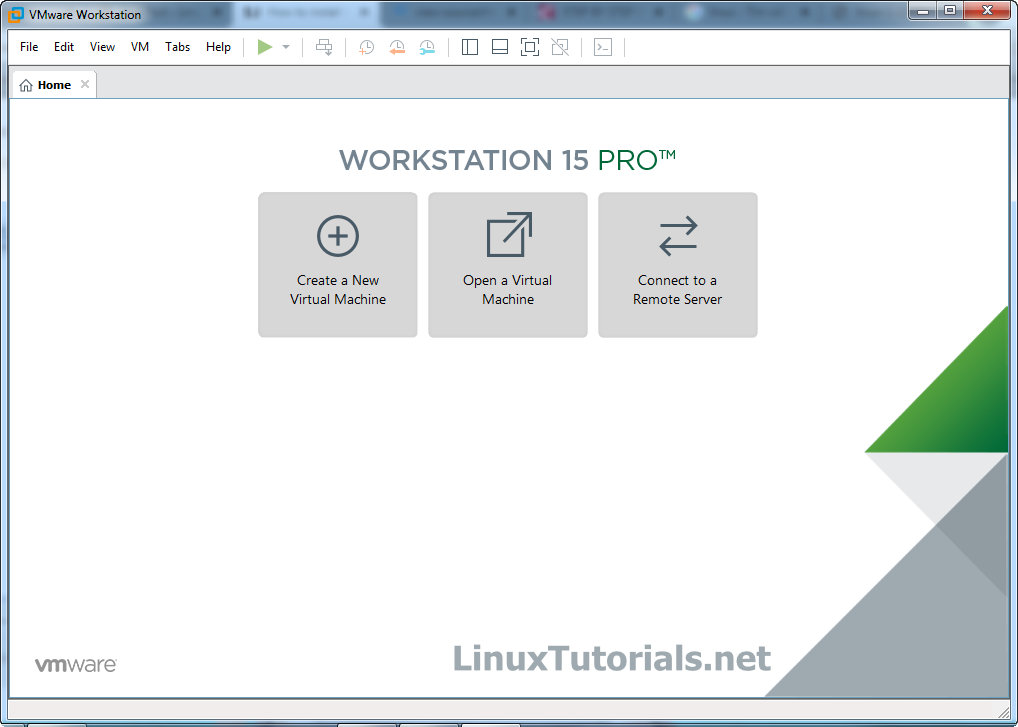
VMware Workstation home screen Screenshot
Step 2- Click on Create a New Virtual Machine
To launch the wizard to create a new virtual machine, Click on Create a New Virtual Machine or File -> New Virtual Machine. Welcome to the new Virtual Machine Wizard dialog box will open. Select typical and click on next.
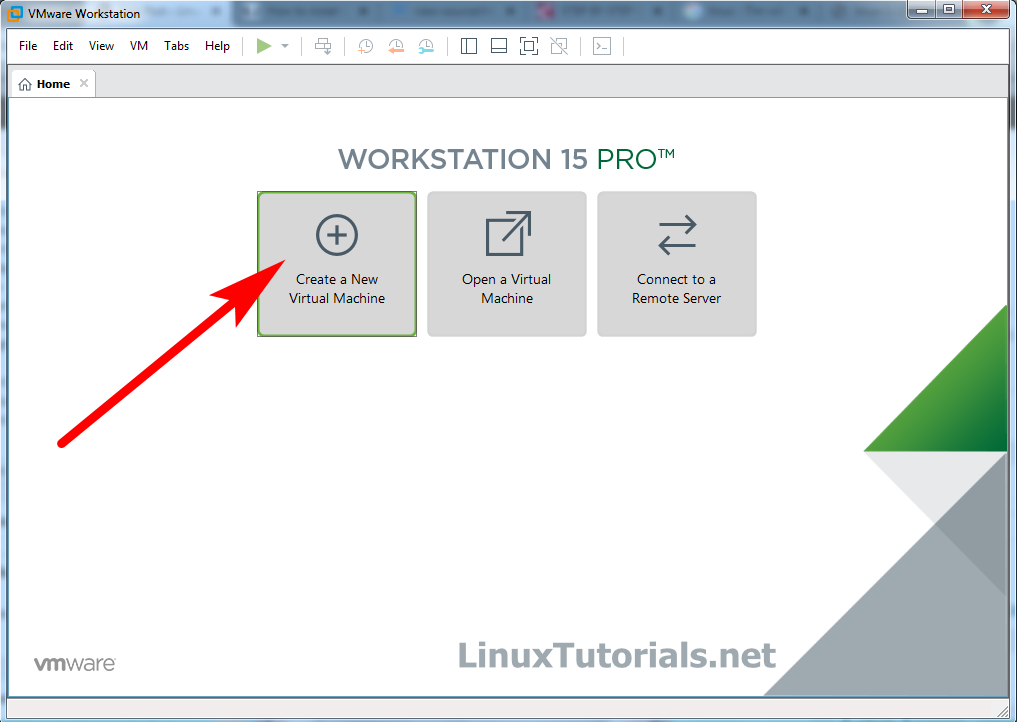
VMware workstation home create a new virtual machine screenshot
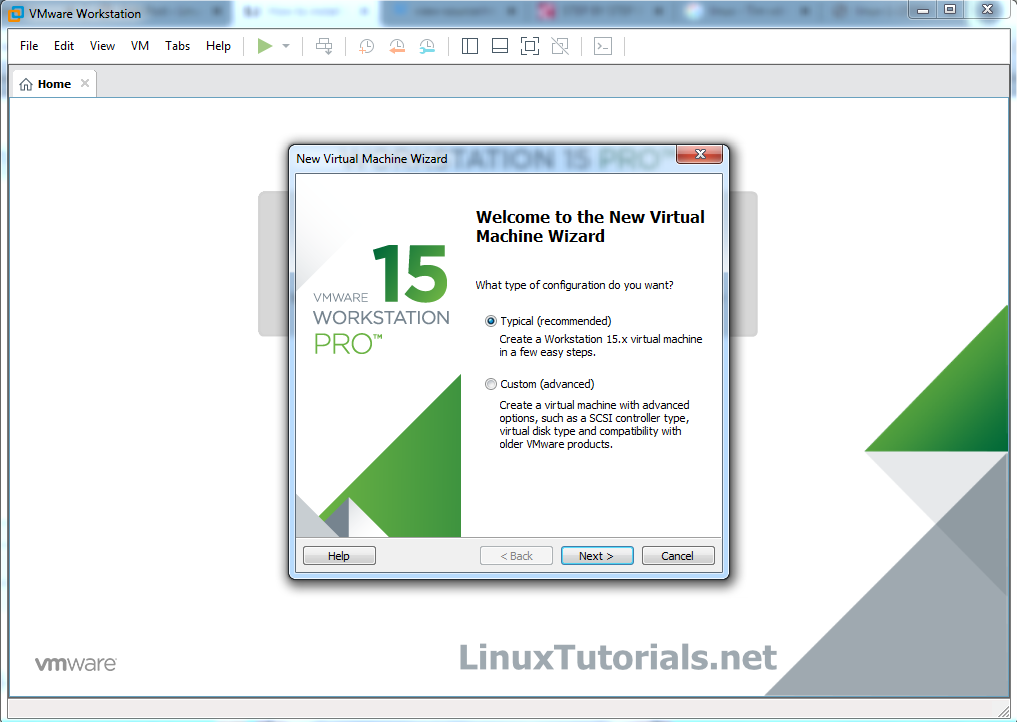
VMware workstation home create a new virtual machine wizard welcome screen screenshot
Step 3- Browse to the ISO Image
Ensure that Installer disc image file (.iso) is checked and click on browse to the downloaded .iso image file. Select it and click on next to continue.
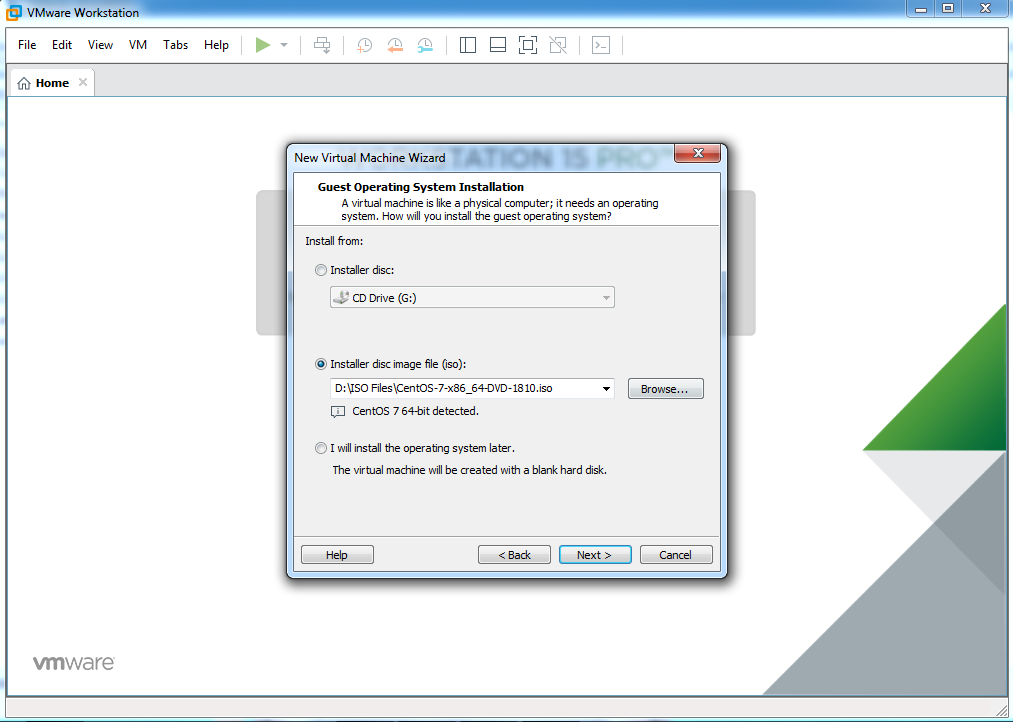
VMware workstation home screen – create a new virtual machine wizard installer disc image file browse screenshot.
Step 4- Enter virtual machine name
In this dialog box, enter the name of the virtual machine or accept the default. I normally accept the default. Location tells you where the Virtual machine files will be created. Click on Browse to select an new location. Normally, I leave it as it is.
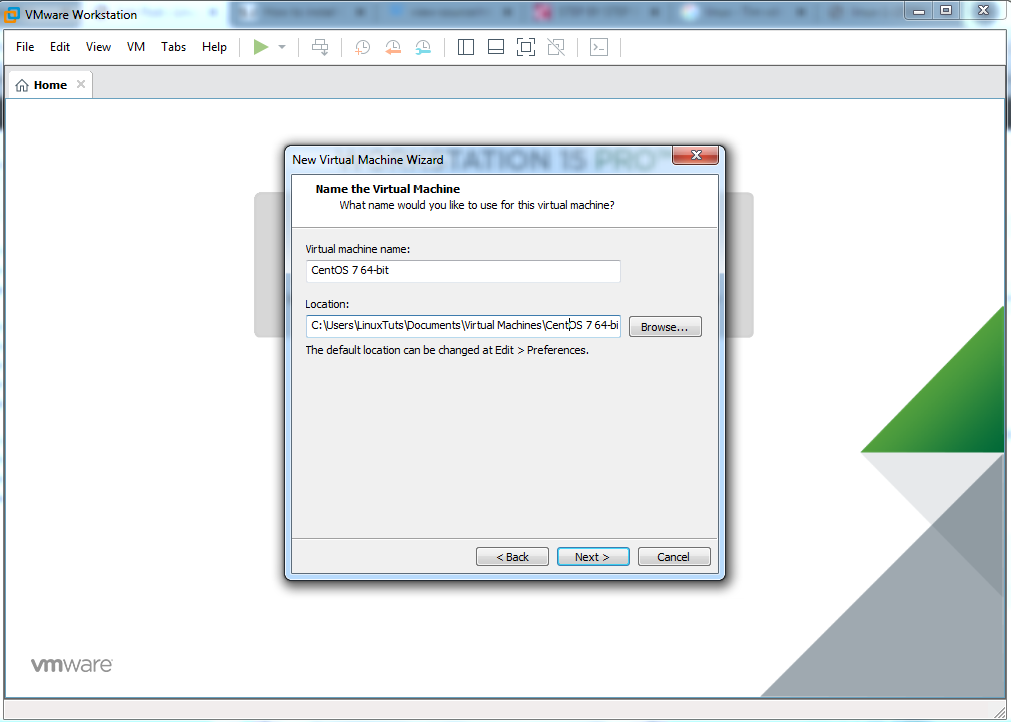
VMware workstation home create a new virtual machine wizard virtual machine name screenshot
Step 5 – Specify Disk Space
In this dialog box specify the disk space. Normally I go with the default. You can allocate more if you plan to install applications later on. Make sure that split virtual disk into multiple files checkbox is checked.
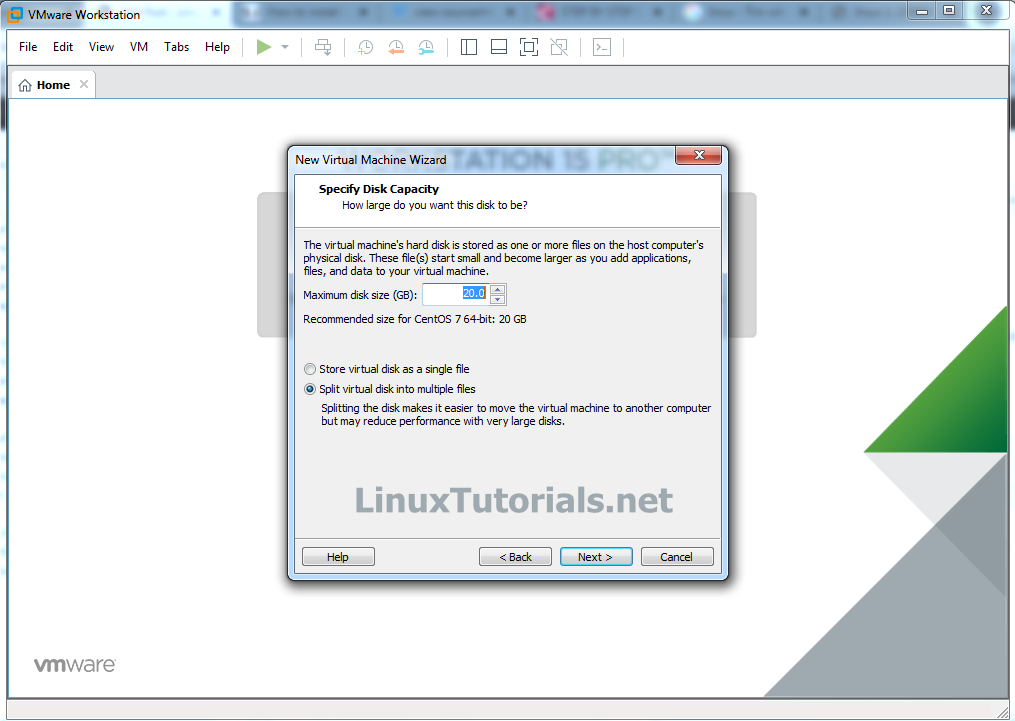
Step 6- Ready to create virtual machine
Now you will see ready to create virtual machine dialog box. With this the installation process will begin.
Click on Finish to start the process. At this stage, I normally provide the virtual machine more RAM and CPU. Default is 1 GB RAM and 1 CPU Core. Increase the RAM only if you have sufficient memory on your system.
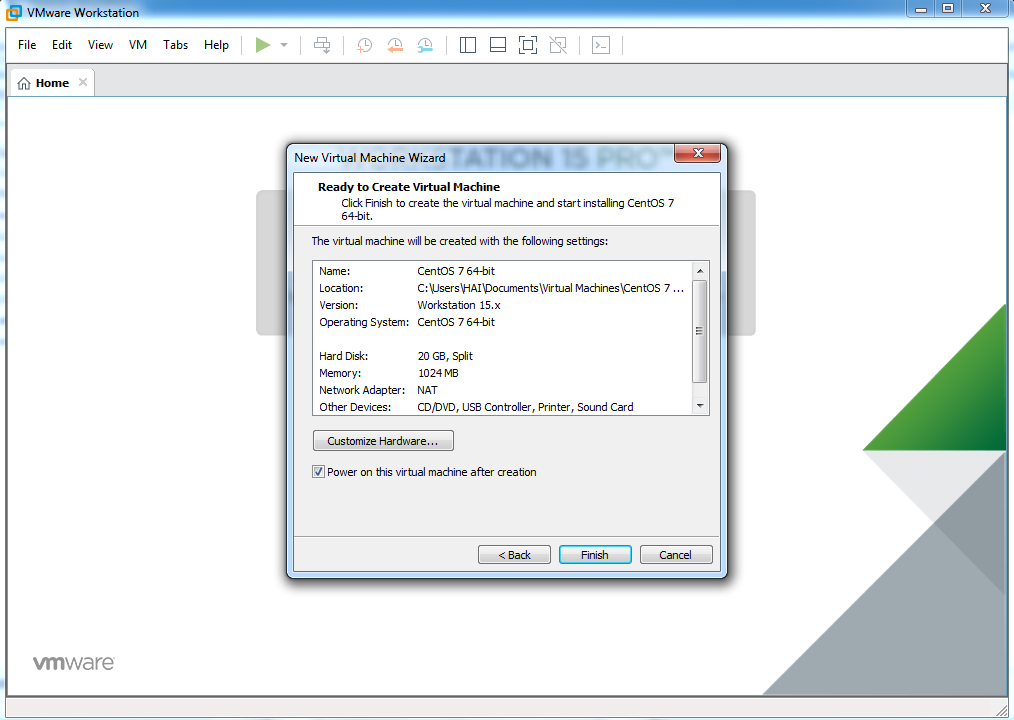
VMware workstation home create a new virtual machine wizard ready to create virtual machine dialog box screenshot
To increase the RAM, before clicking Finish, click on Customize Hardware. Increase the memory using the slider.
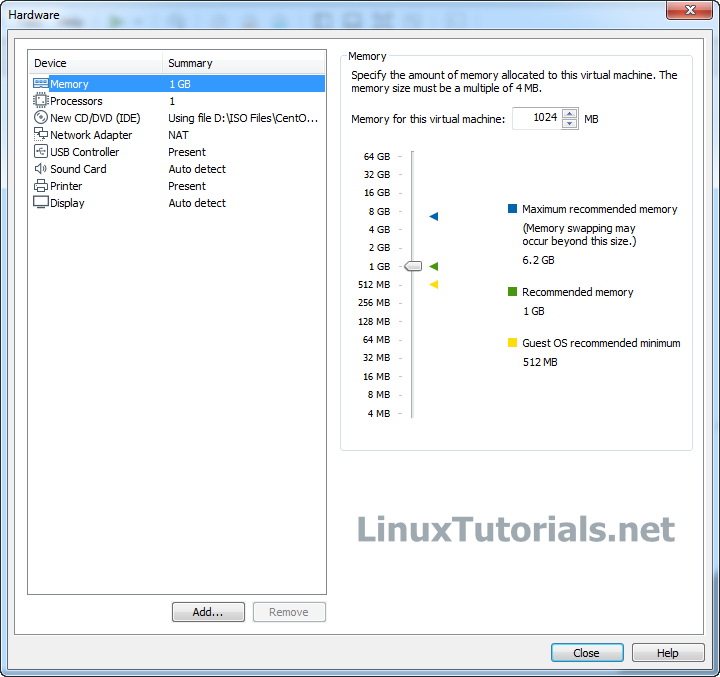
To increase the CPU, Enter the number of the value of processors and number of cores. Click on Finish to start the installation process.

Click on Close and Finish to start the installation process
Step 7- Installation process should begin
You will see the below screen. Press “i” in your keyboard and press Enter.
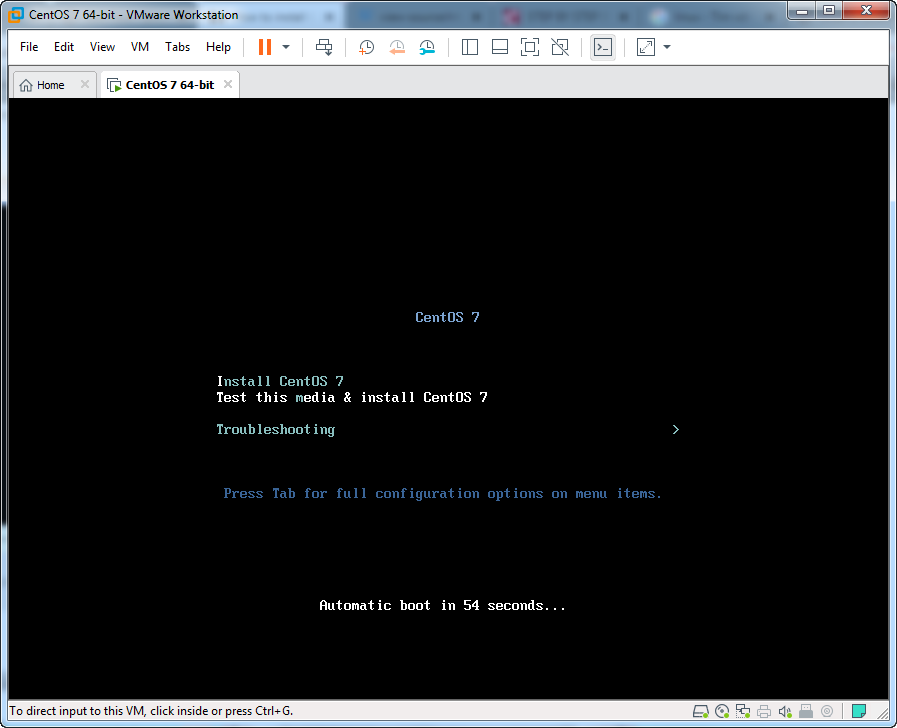
Step 8- Welcome to CentOS setup wizard – select language
Once the installation starts, you should see a dialog box asking you to select your language. Select the language of your choice and click on Continue.
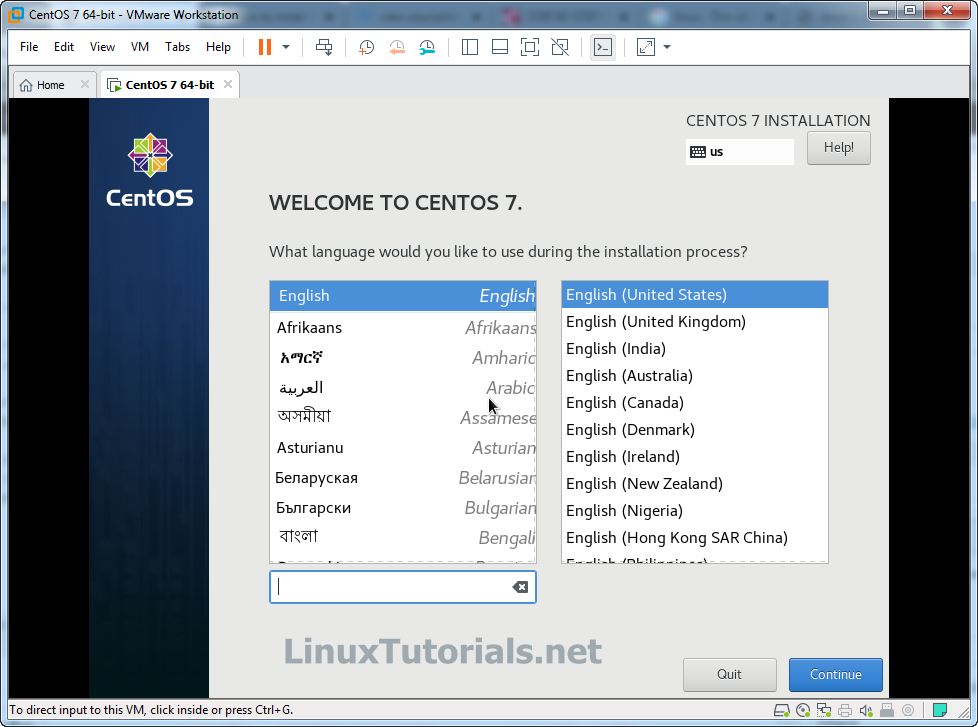
CentOS setup choose language
Step 9 – CentOS Setup – Installation
Now you should see the installation summary. If you see some grayed out area, please wait for a while until you see the below screen.
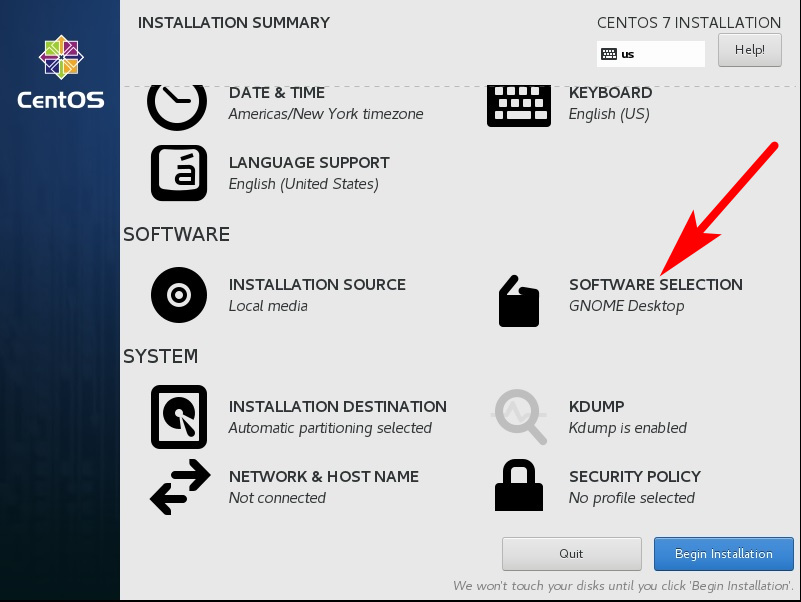
CentOS setup installation summary screenshot
Click On Software Selection and select Gnome Desktop as shown below and click on Done and then click on begin installation.

CentOS setup – software selection – base environment
Step 10- CentOS setup – setup root password and setup user
The installation process will begin and you will be presented with a screen to configure root password and create user as shown below.

centOS Setup – setup root password and create user
Click on Root Password, you should see a dialog box to enter your root password. Enter your root password and click on done. If you get weak password warning, click on Done Twice.
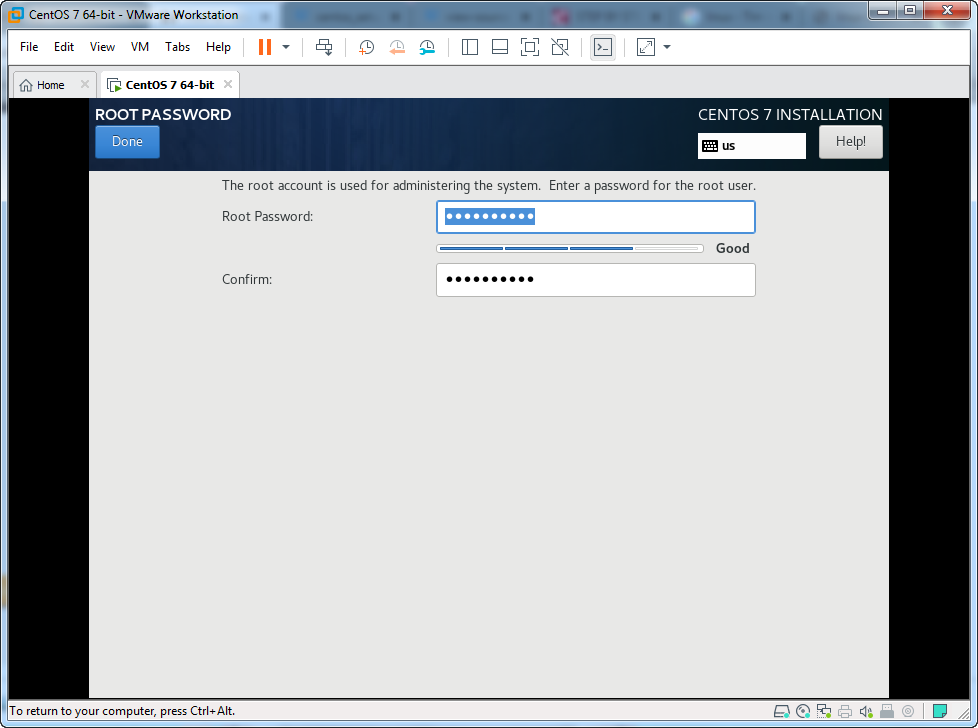
CentOS setup set root password dialog box screenshot
Once root password is setup, click on User Creation. In the dialog box will enter the name of the user, password, check the box if you want to make the user administrator. If you get weak password warning, click on Done Twice.

Centos setup – User creation
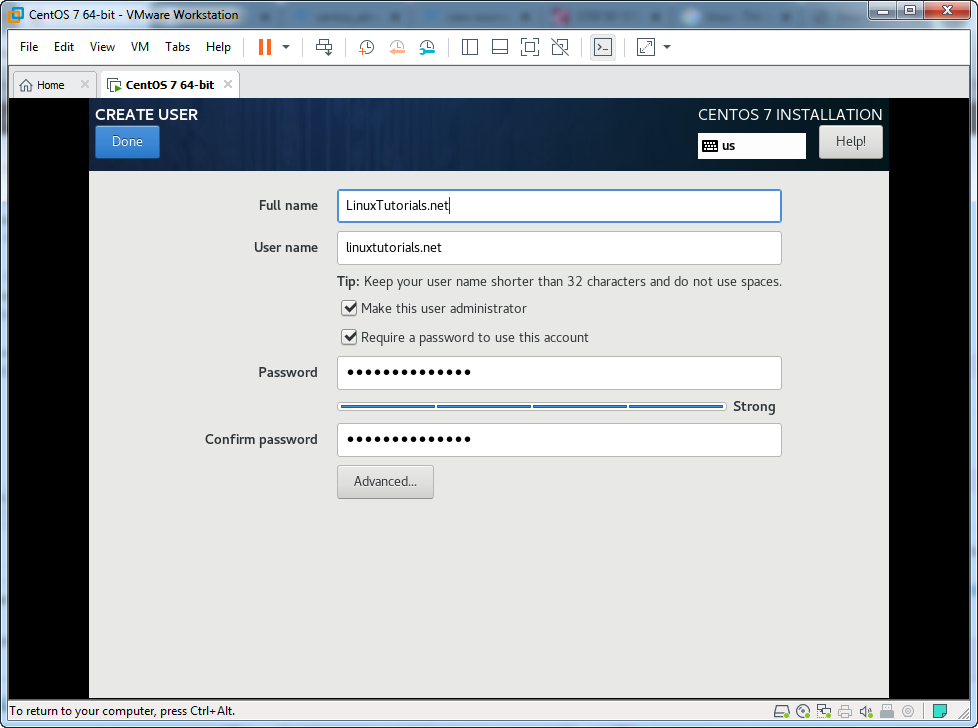
CentOS Setup – Create user dialog box screenshot
One the user and root password is created, you will see both the options grayed out. Let the installation complete at you will be asked to restart once done. Please go ahead and click on Reboot.
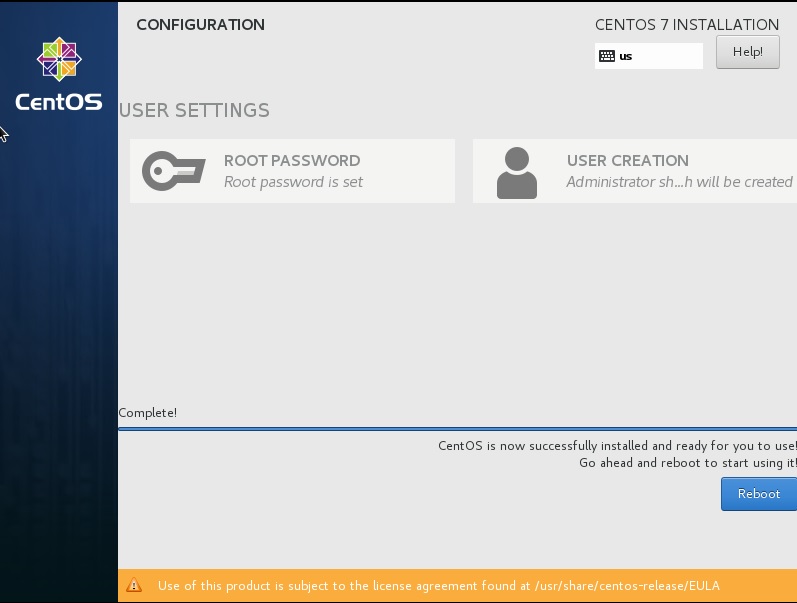
CentOS Setup – Installation complete – reboot
Step 11- CentOS setup – Initial Setup
Once the system restarts, you will be see the below initial setup screen.
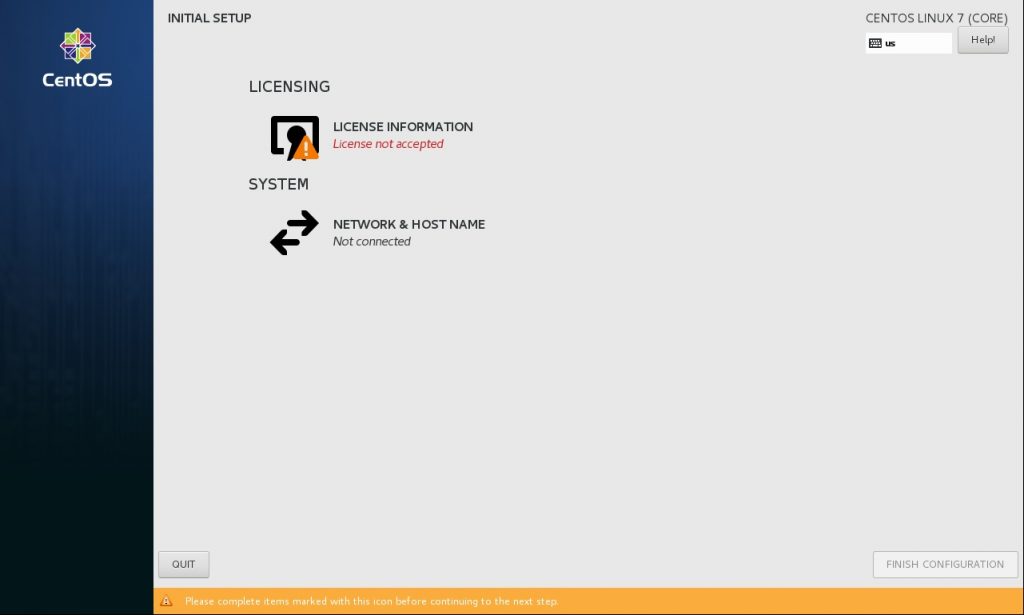
CentOS Installation – Initail setup
Click on Licence Agreement. In the dialog box that you see check the licence agreement at the bottom of the screen and click on done button at the top of the screen.
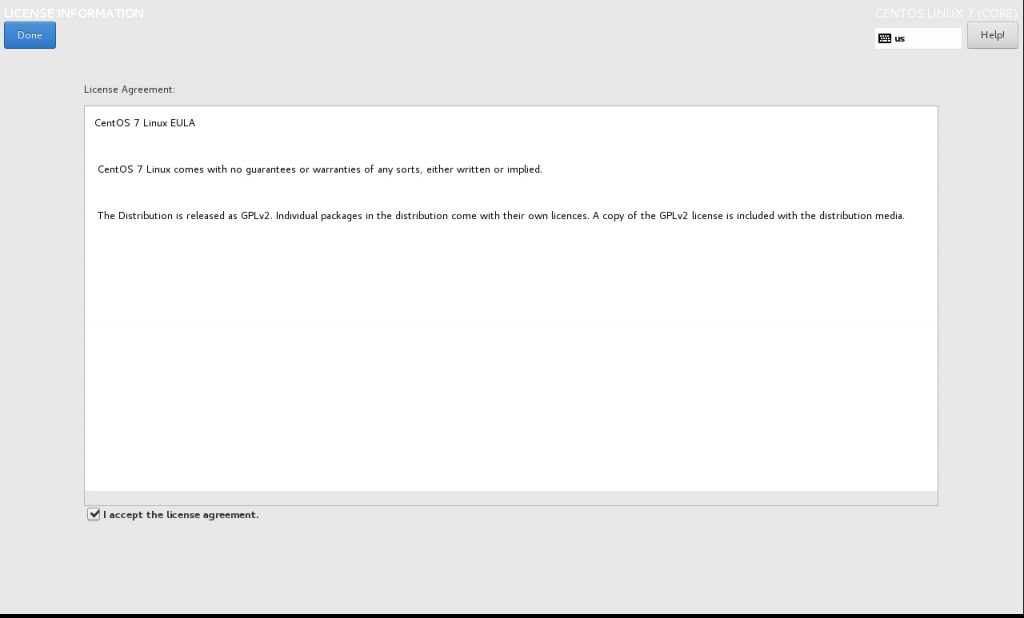
CentOS Installation – Licence Agreement
Step 12- CentOS – Login
Now you will see the login screen. You will see the user name you created earlier. Click on the user name and enter your password which was setup earlier.
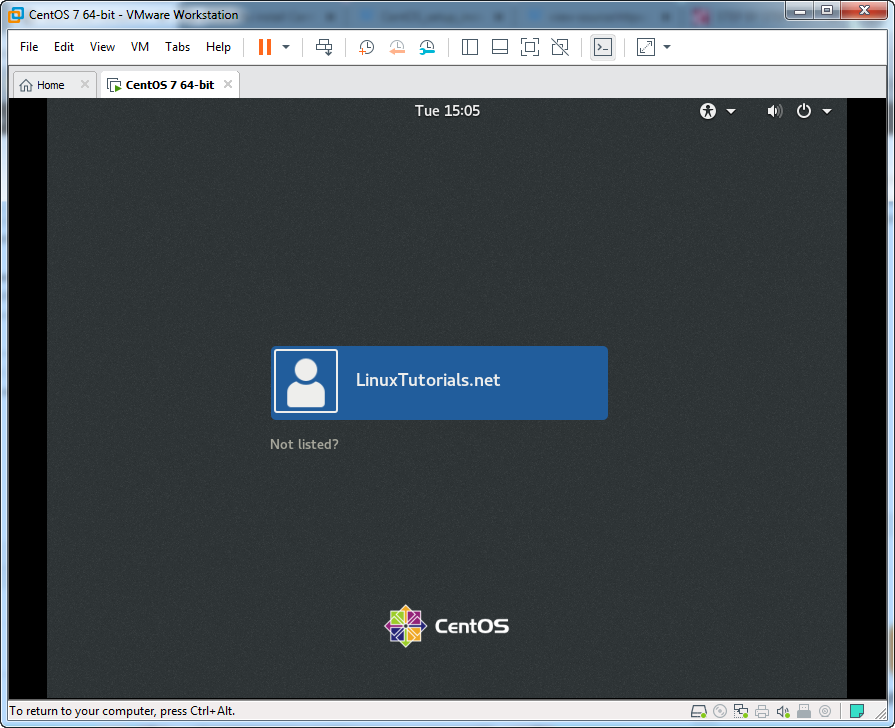
Enter your password in the resulting screen. Now you will see the CentOS desktop. There are some more settings required. You will see a welcome screen
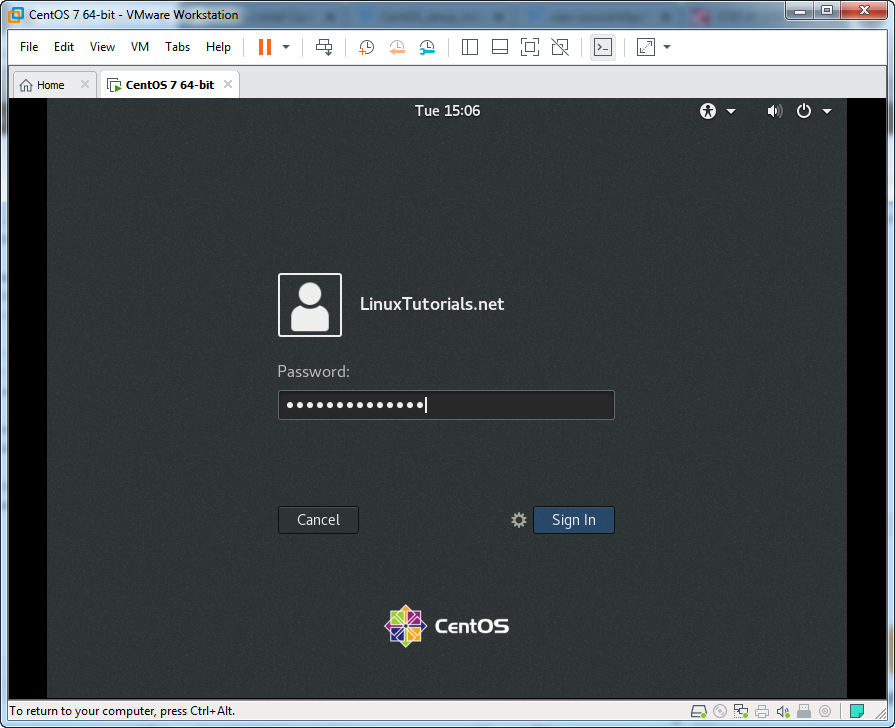
Step 13- CentOS – Welcome Screen – language preference
Once you have logged in for the first time, you will asked to select your default language in the welcome screen. Select the language of your choice and click on next.
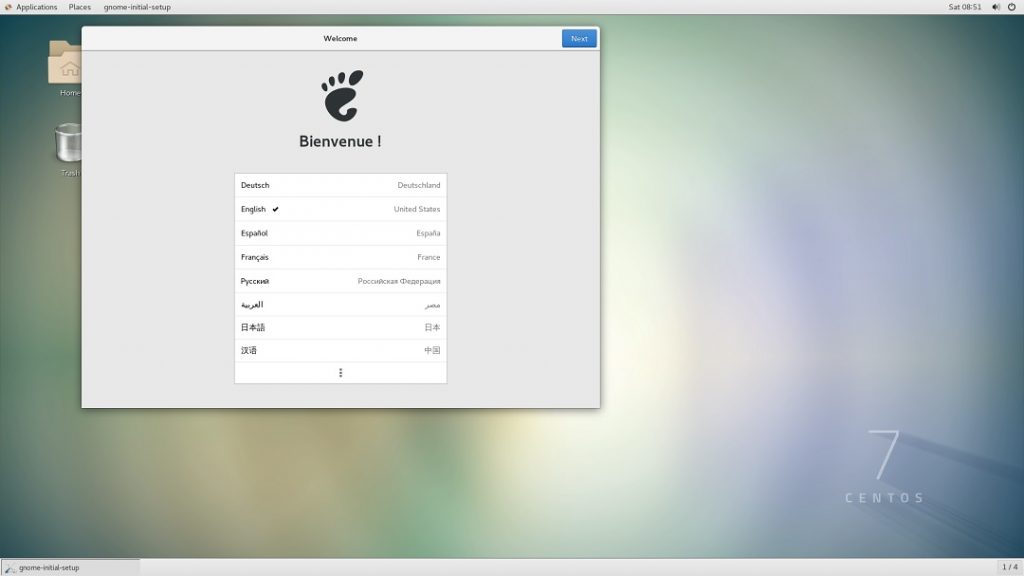
CentoOS Installation – Welcome screen – language preference
Step 14- CentOS – Welcome Screen – Keyboard preference
Now you will be asked to set your keyboard. Select based on the keyboard preference you have.
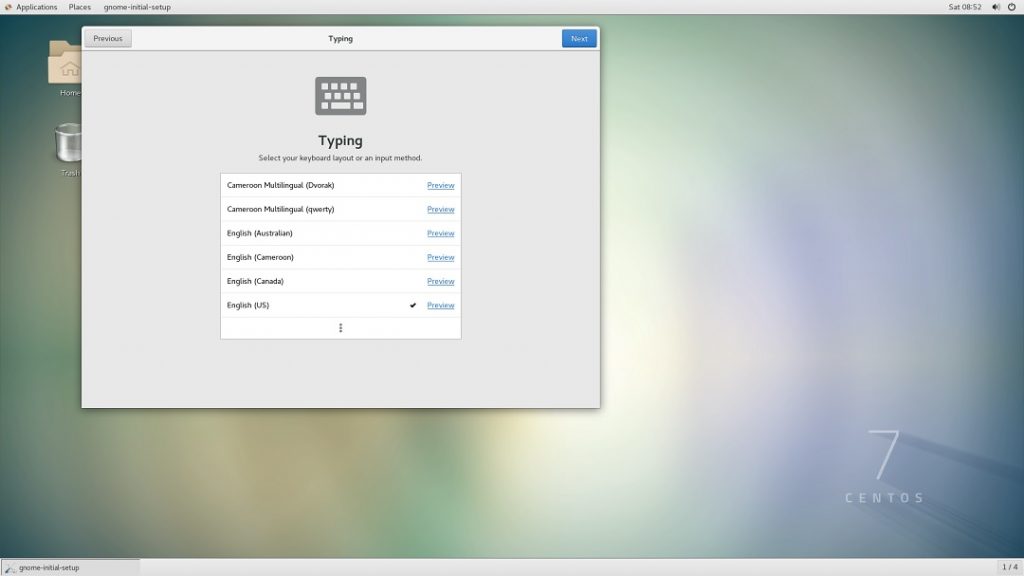
CentOS installation – Welcome Screen – Keybaord preference
Click next to continue.
Step 15- CentOS – Welcome screen – privacy
Now you will be asked to set your privacy which is basically, if you want the application to use the location service. Select yes or no using the slider. Click on next to continue.
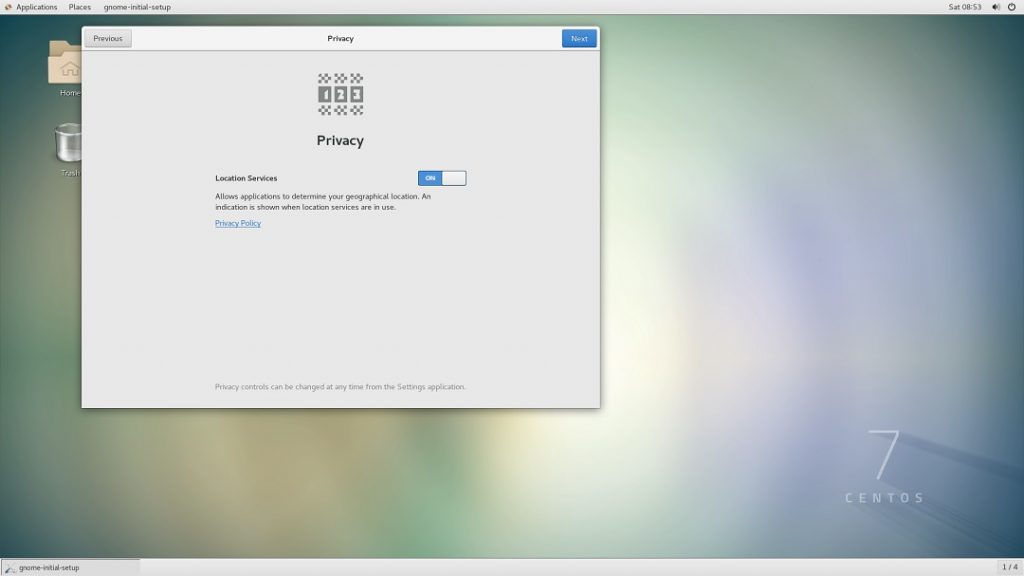
CentOS Setup – Welcome screen – privacy preference
Step 16- CentOS – Welcome screen – setup online account
Now you will be asked if you want to setup online accounts such as Gmail etc.. for setting up mail and other services. I generally don’t set it up here. If you want to set it, click on the service and you will be redirected to the service provider authentication system where you will have to enter your user ID and password.
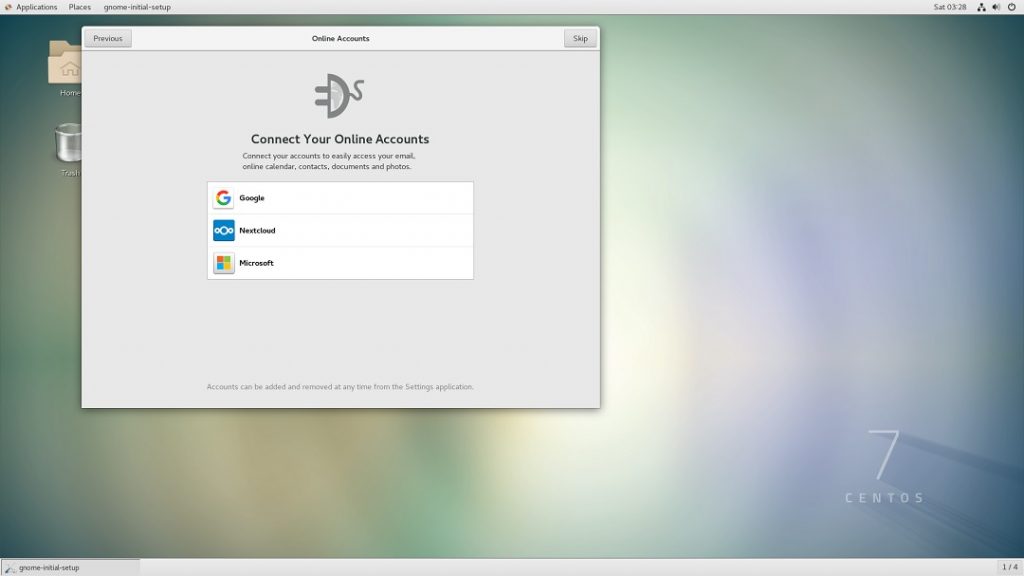
CemtOS installation – welcome screen – connect your online account
Step 17- CentOS – Welcome screen – All done
That it. Click on start using CentOS.
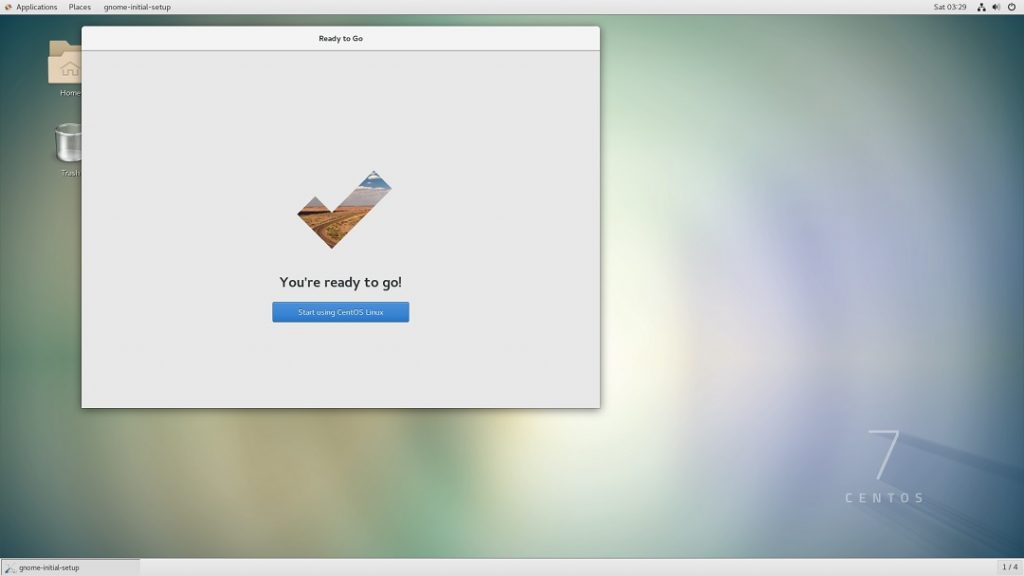
CentOS setup complete
Step 18- CentOS – Network setup
If CentOS is not able to access the internet – Goto Application-> System Tools -> Settings-> Network
Turn on Wireless connection.
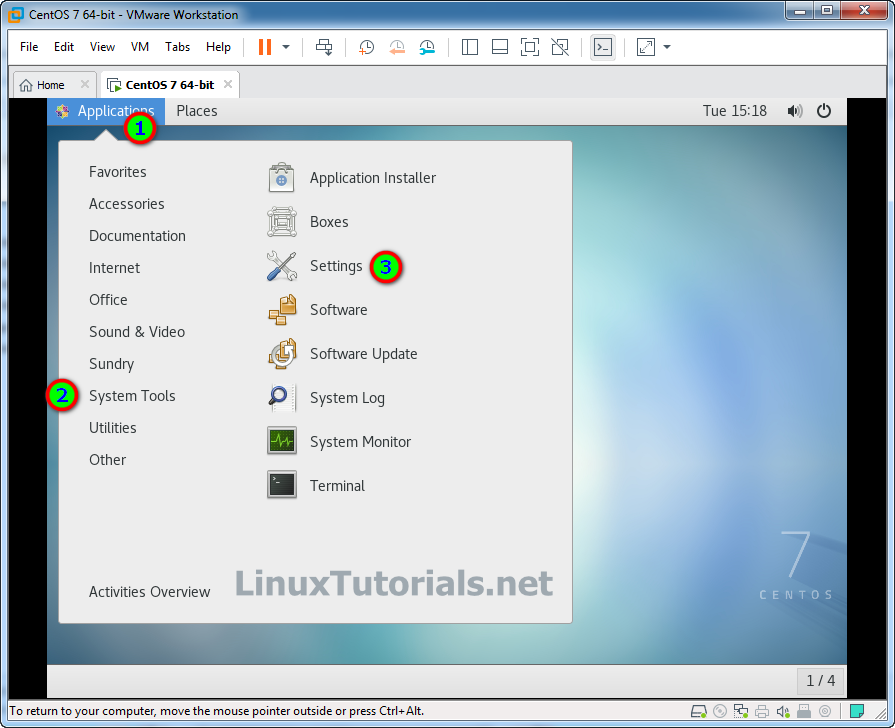
CentOS Network settings
Turn on Wireless connection.
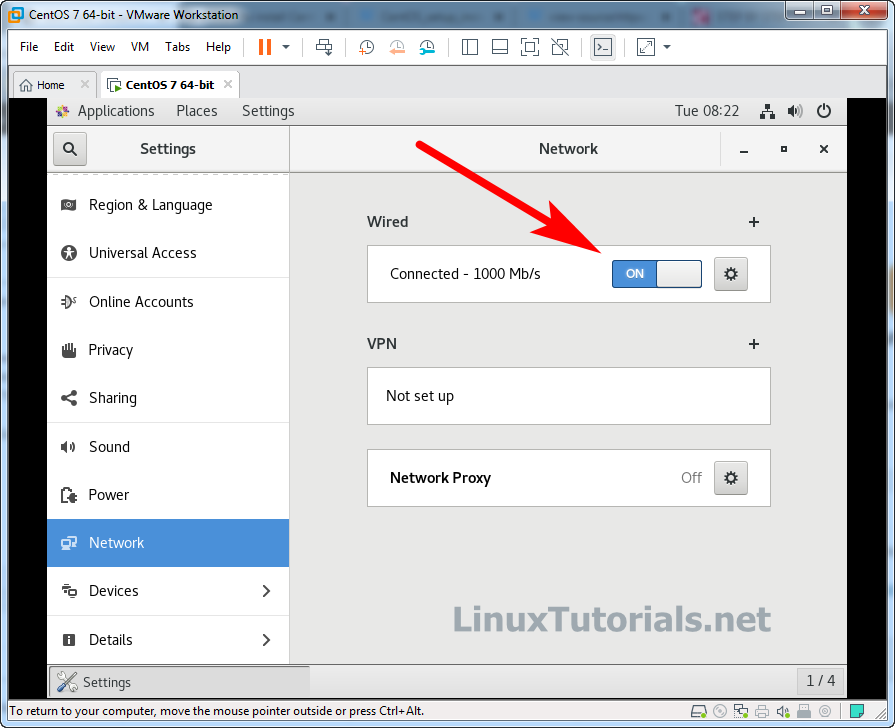
CentOS Network settings
That it you are done.

